April 15, 2021
Navigating Native Plants
Most of the time, native plants don’t freak out about whatever Texas weather throws at them. Sure, we get a few casualties, including this year’s mushed up agaves. Plants may hunker down or not perform to our expectations in extended drought and freeze, but eventually they rally. My Salvia lyrata and Brazos penstemon (also called Gulf penstemon) quickly rebounded from last summer’s long, hot dry spell and icy crystals in February.
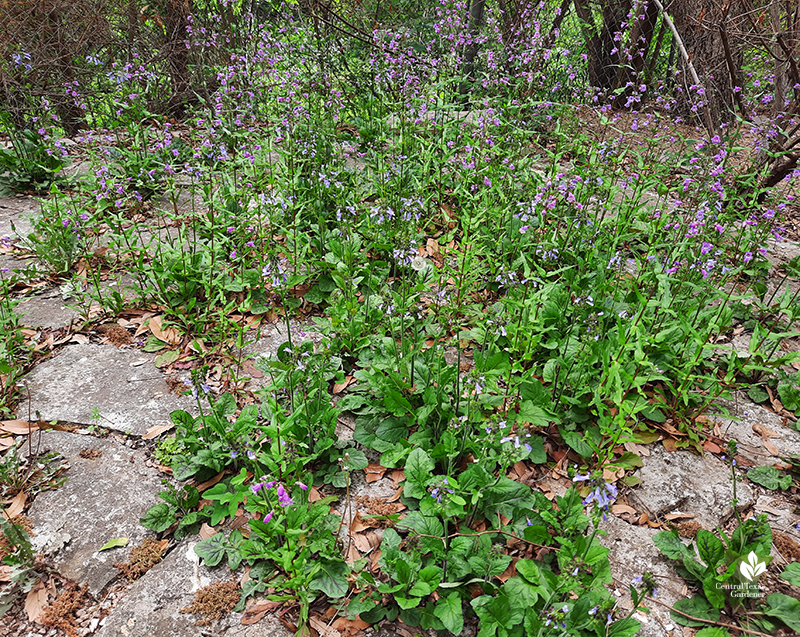
Originally, I planted them in my more cultivated beds. Fed up with that, eventually they declined. They flung their seeds with vigor, though, and the ones that landed in gritty crevices on my rustic back patio claimed their new home.
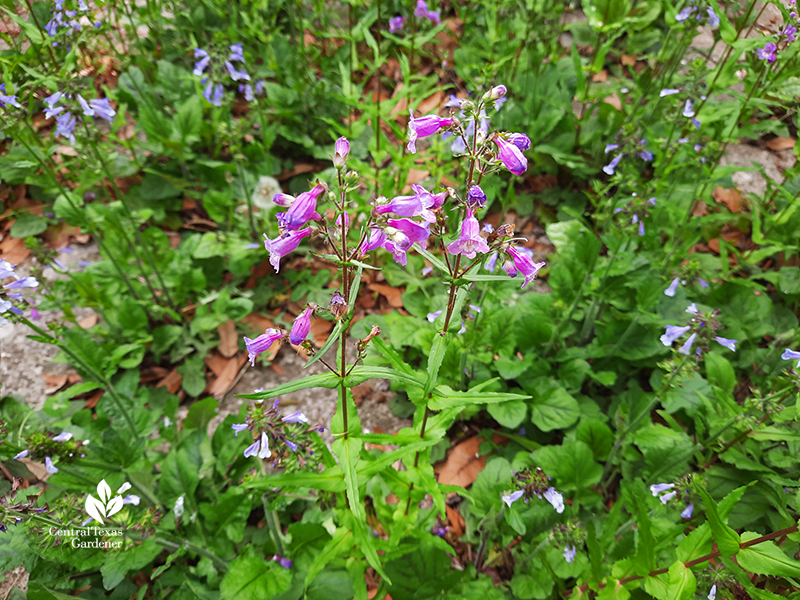
Bees and other pollinators literally dived in this week.
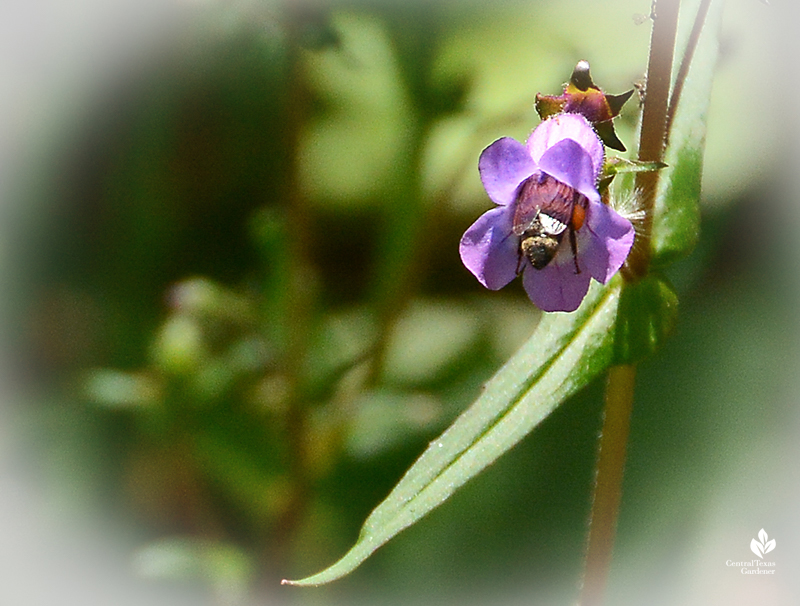
What exactly is a native plant? “It’s a complicated concept,” said Andrea DeLong-Amaya, director of horticulture at the Lady Bird Johnson Wildflower Center. “One of the shorthands that we use is to simply say that it’s a plant that occurs naturally where it evolved. Some people have said that it’s what occurred before European settlement, but we also know that Native Americans were moving plants around, too.”
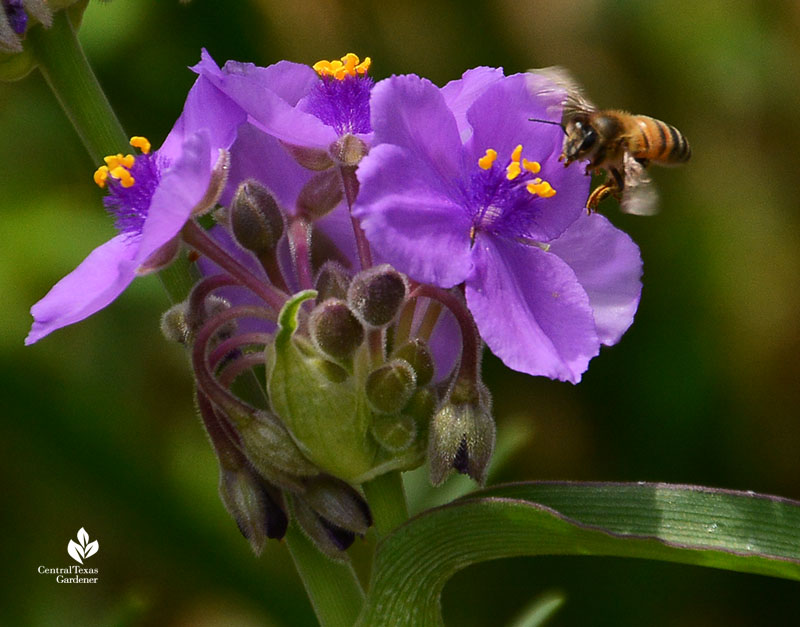
In a Zoom conversation, Andrea joins John Hart Asher, senior environmental designer with Ecosystem Design Group to highlight basic concepts when selecting native plants for your garden. Both inspired by Doug Tallamy, University of Delaware professor, entomologist, and author (also featured on CTG), Andrea noted that he describes a native plant as one with historical evolutionary relationships with a particular wildlife community.

At the same time, most of us grow naturalized plants. “And that’s okay, we don’t have to have marigold guilt!” John Hart quipped.
SO, please right now, cancel the guilt if your garden includes trustworthy favorites (as long as they’re not invasive)! I’ve got native pink evening primrose (visited by a metallic green sweat bee) nuzzling bearded iris.
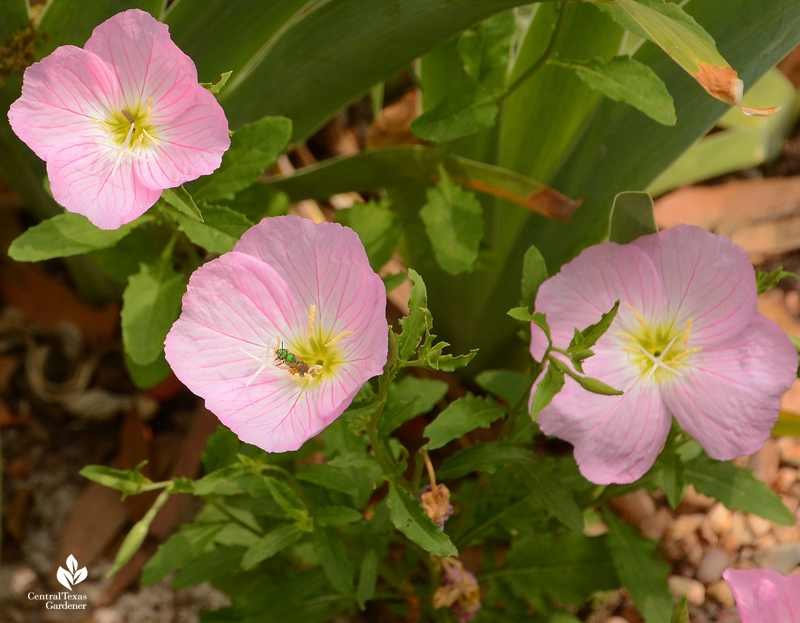
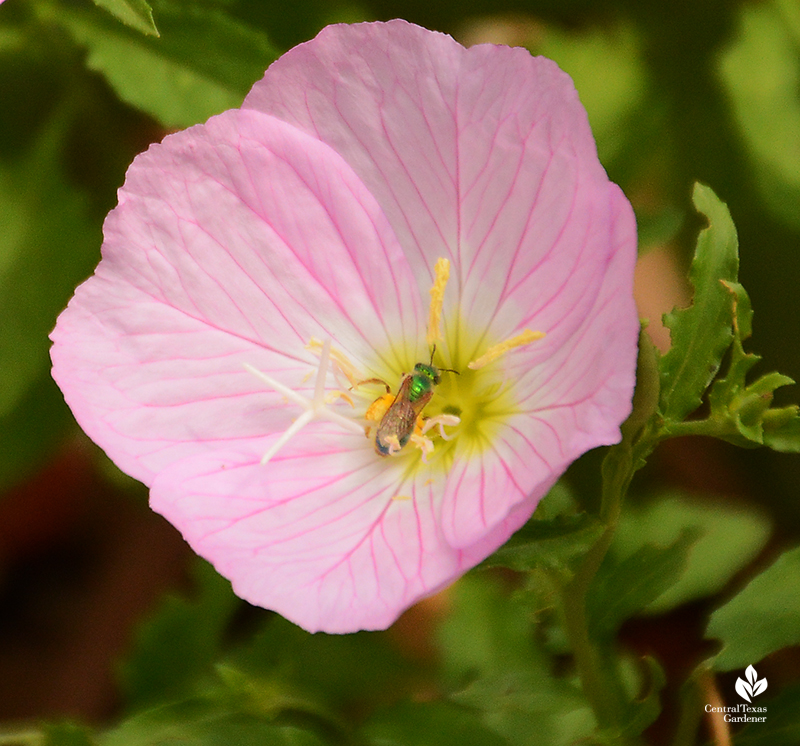
Just feet away, drought-tough, fragrant climbing Cecile Brunner rose buddies up with the pink theme.
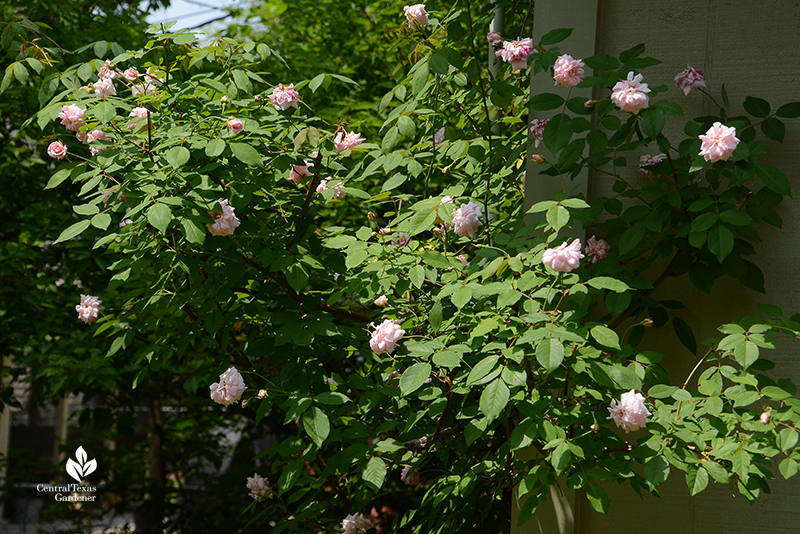
Bearded irises also companion with chile pequins and fall-blooming asters.
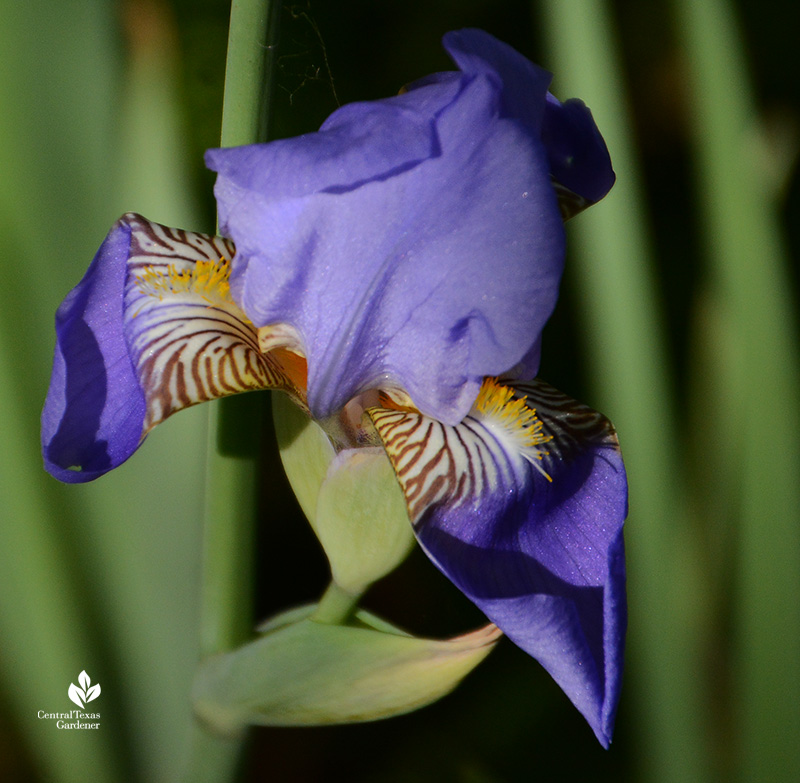
Maggie rose holds court above native sedges in my garden that only gets brief irrigation in summer.
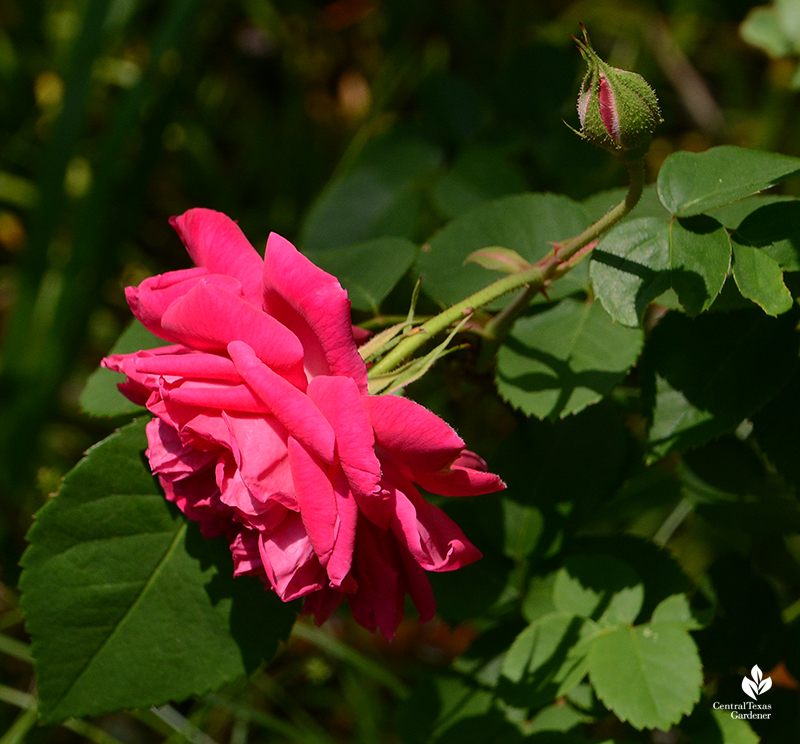
Just like adapted plants, natives can be picky about their soil (as I well know!). “You’ll be more successful if you can match your plants to the soil,” Andrea advised. Some plants go along with clay, loam, and rocky conditions, like rock rose (Pavonia lasiopetala), as long as they get good drainage. Rock rose accepts sun to part shade and its spring to fall flowers are beloved by pollinators.
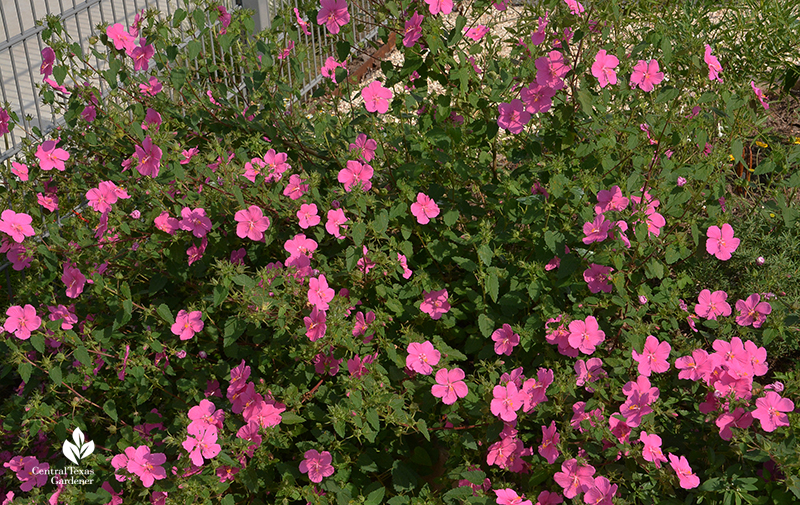
Some really don’t want wheelbarrows of compost or mulch, including bluebonnets. That’s why they’ll generously seed in your gravel paths (as do my penstemons and Salvia lyratas). It’s the same deal with succulents like agave and prickly pear, here with bluebonnets and orange-hued globe mallow in the Gillum’s Dripping Springs garden.
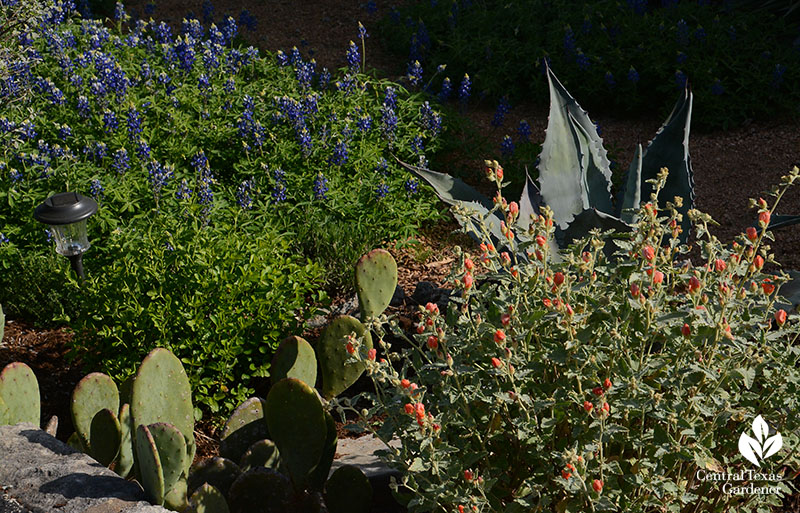
Compost can assist perennials like evergreen Salvia greggii and winter-dormant asters. Mainly, make your life easier by not trying to make a plant work for you. Instead, find the plant that works in your soil. We all experiment, and sometimes we fail, but there’s no reason to start out knowing that a plant’s destined for the compost pile.
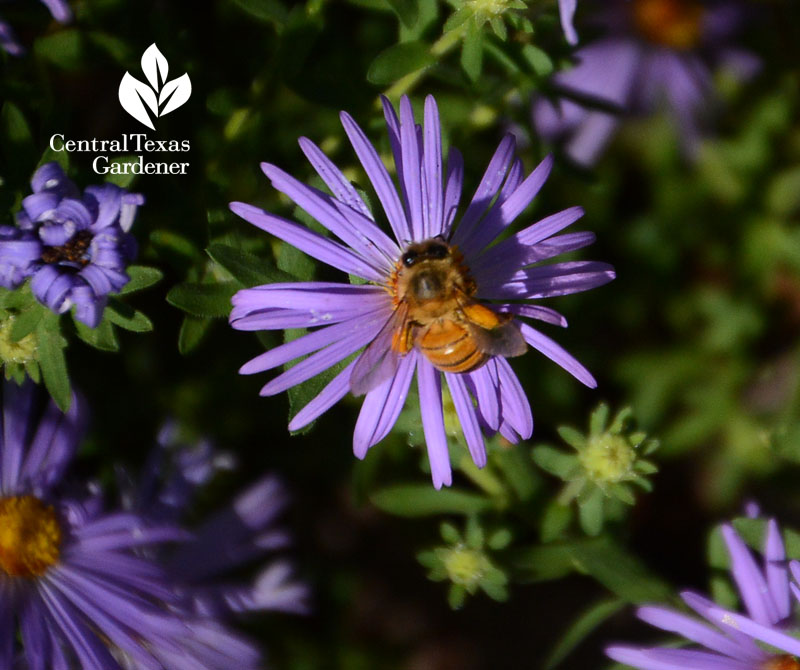
Next, what’s your light like? That’s the first thing a plant needs to know. Andrea cautions that non-native plants may host nursery tags for “full sun,” but full sun in Texas is not the same as in Michigan!
Generally, “sun” means about six hours of sunlight a day. Countless plants fall into this category, so check out the Wildflower Center’s advanced search where you can match your location and garden desires. Andrea noted autumn sage (Salvia greggii) and herbaceous (not-woody) mealy blue sage (Salvia farinacea). Golden-flowered zexmenia joins mealy blue sage in this sunny spot.
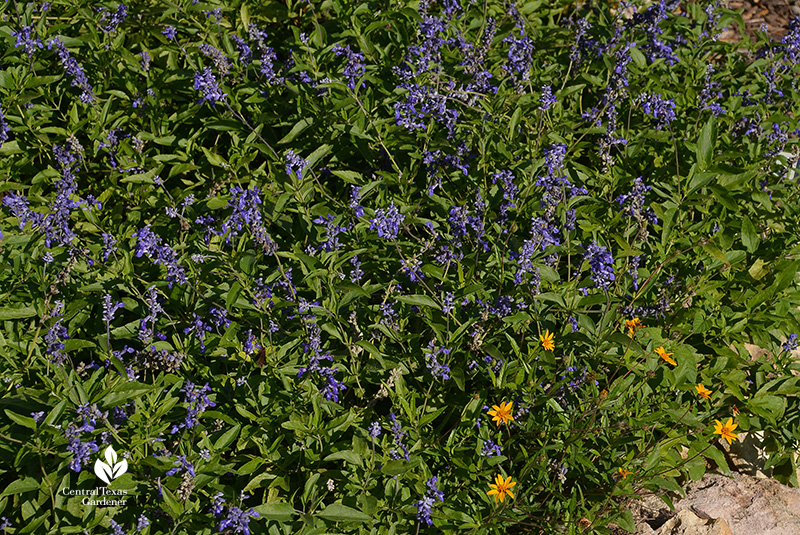
Mealy blue sage accepts many soil conditions, but needs moist soils (or at least watering in summer). If you want hummingbirds, butterflies, and bumblebees, this one’s for you.
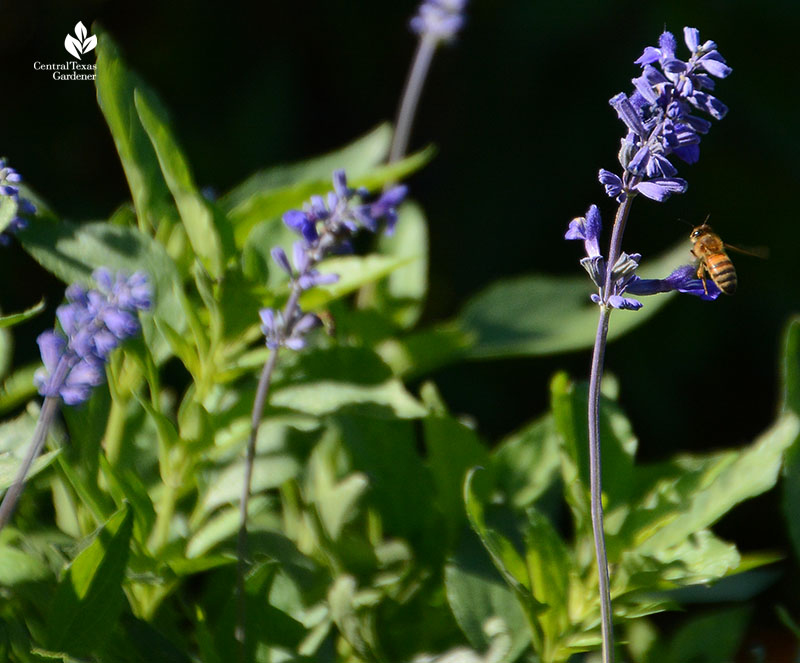
‘Henry Duelberg’ is a natural hybrid discovered by horticulturist Greg Grant. Here’s blue Henry with white ‘Augusta Duelberg’.
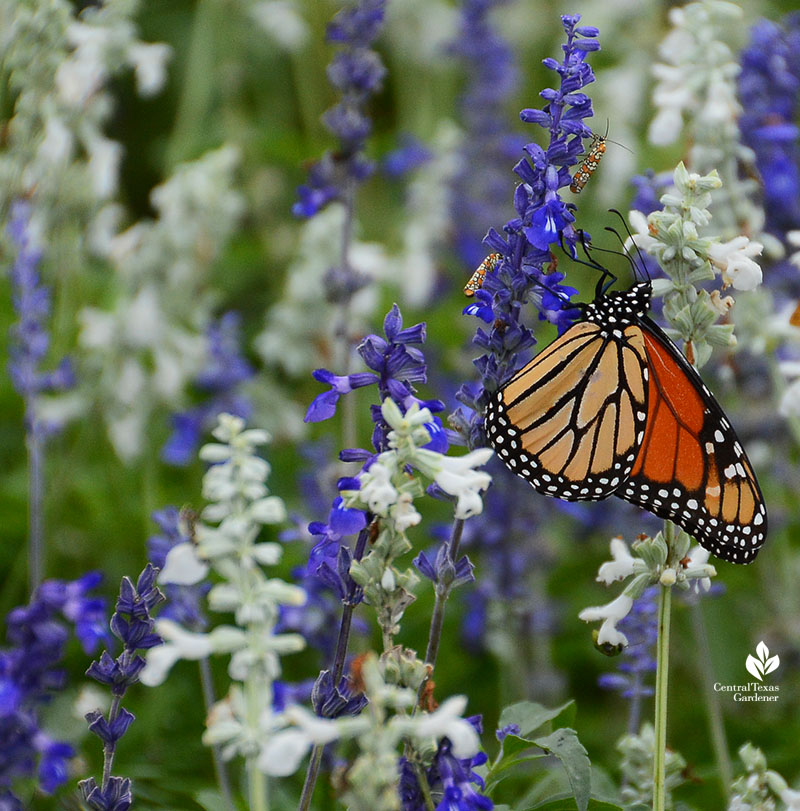
“Shade” means about six hours or so without direct sunlight. Annual, but self-sowing tropical sage (Salvia coccinea,) fits into beds and containers. Every year nurseries present new cultivars to mix in with the original red.
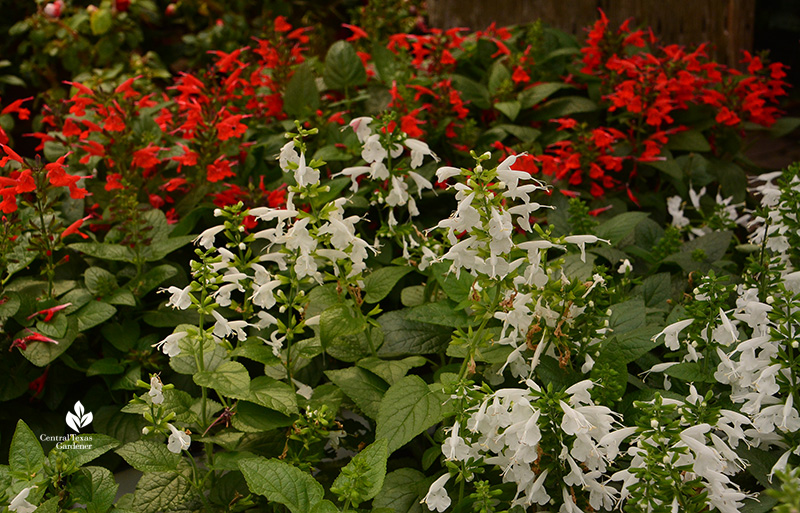
Chile pequin is another that fits the bill, especially for birds that pluck the fruits and scatter them.
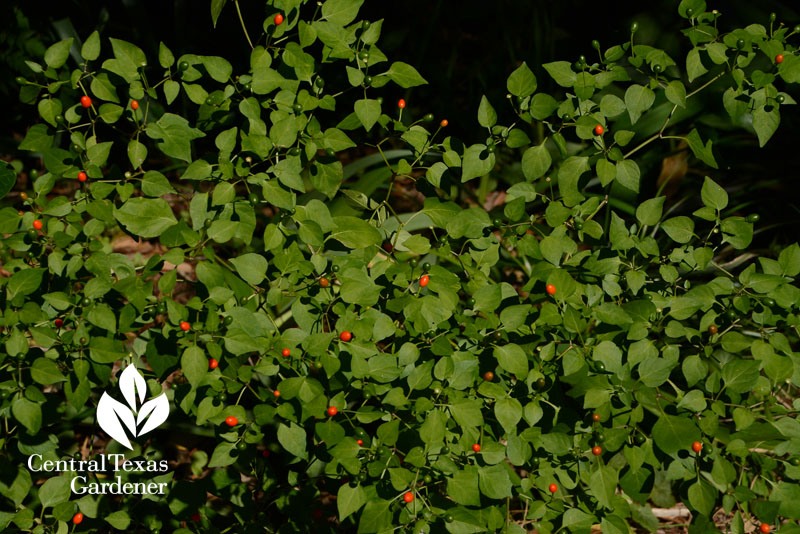
We’ve also got intermittent light, where it’s shady one part of the day and sunny in another. The salvias and chile pequin swing along fine with that, as do all the mistflowers, asters, rock rose, and turk’s cap.
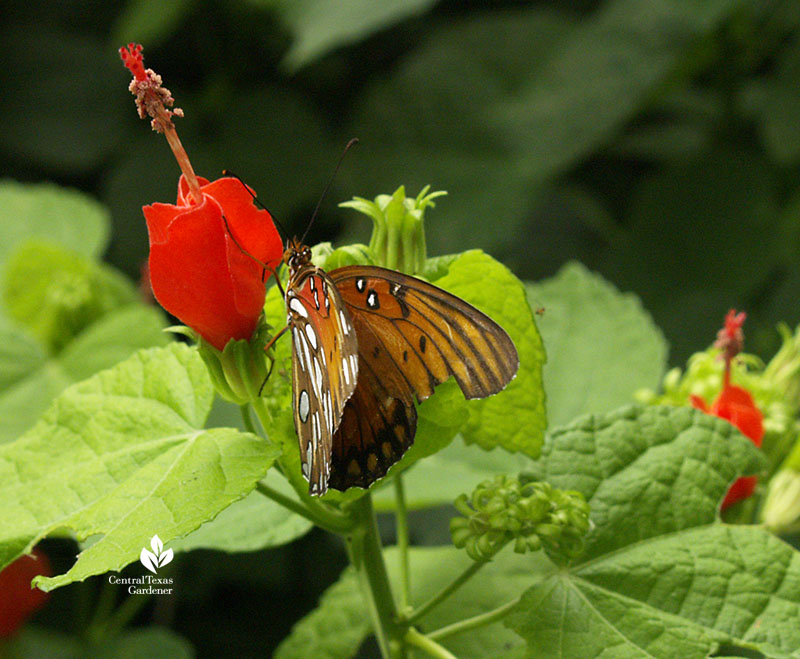
Lantana is one that can take some shade, too.
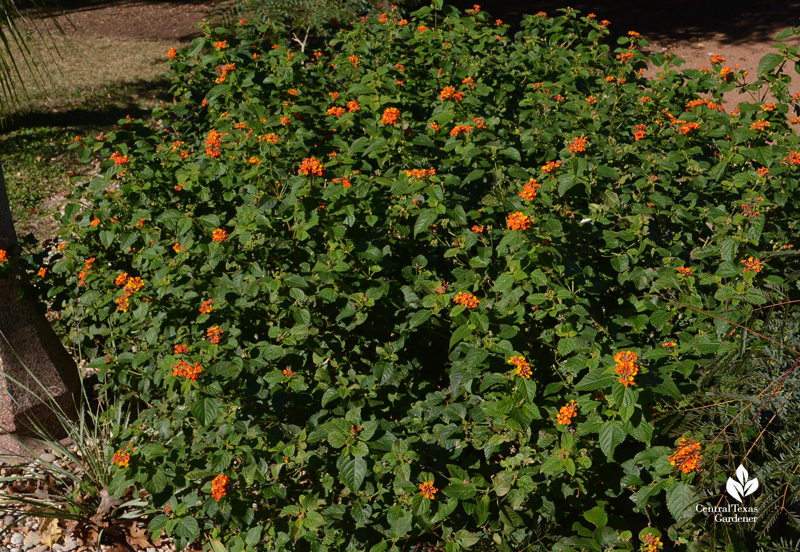
In my garden, these all handle a really tough combination: morning shade and blazing afternoon spikes. Another one is shrubby boneset, also called white mistflower and fragrant mistflower. This perennial fall bloomer heralds migrating and resident pollinators in fall.
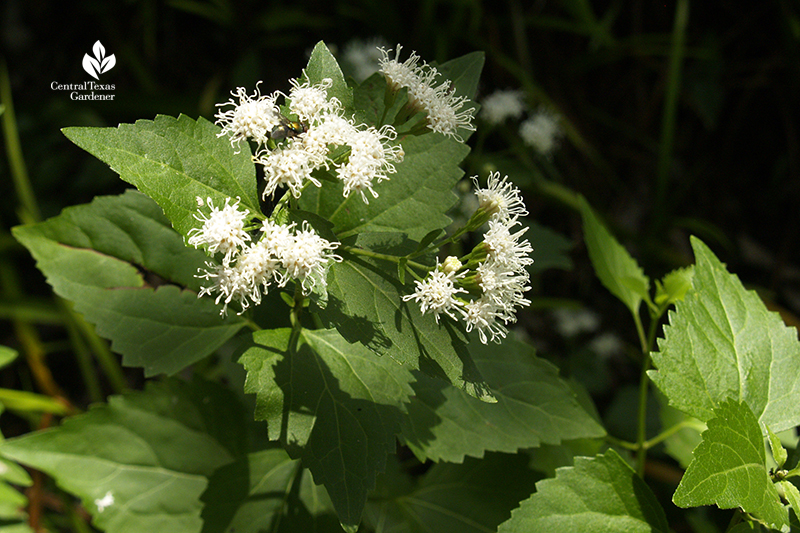
Its branches may brown in some winters, so just trim back in February or so. Mine are already leafed out nicely after the big freeze.
For quick summer color, now’s the time to plant sunflowers! Named the Wildflower Center’s “2021 Wildflower of the Year,” there are numerous annuals that are easy to seed.
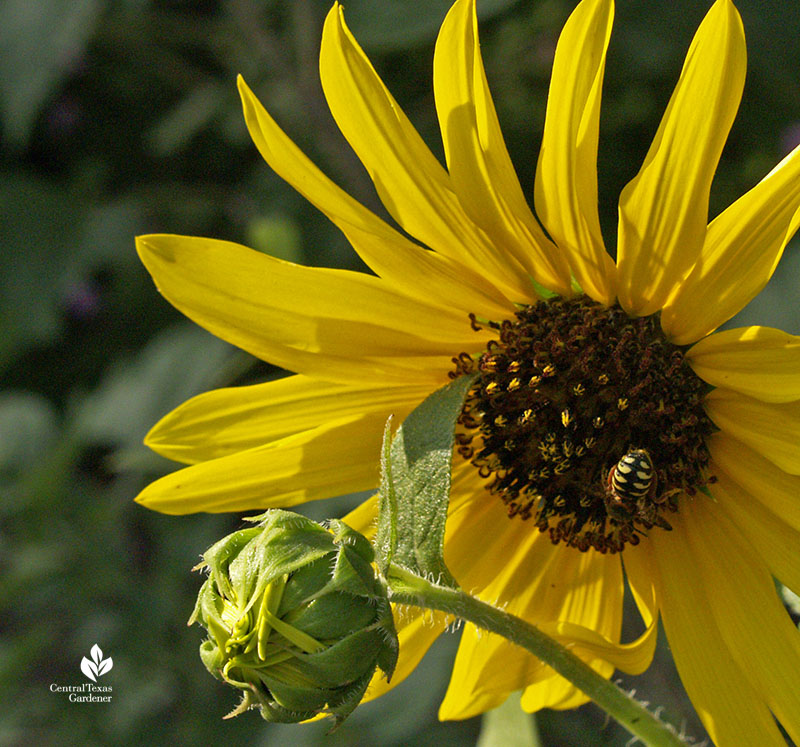
There’s also perennial Maximilian sunflower that puts on a stately show in fall. “You can’t look at a sunflower and be sad,” Andrea said. “It’s a wonderful plant to attract all kinds of pollinators seeds for birds.”
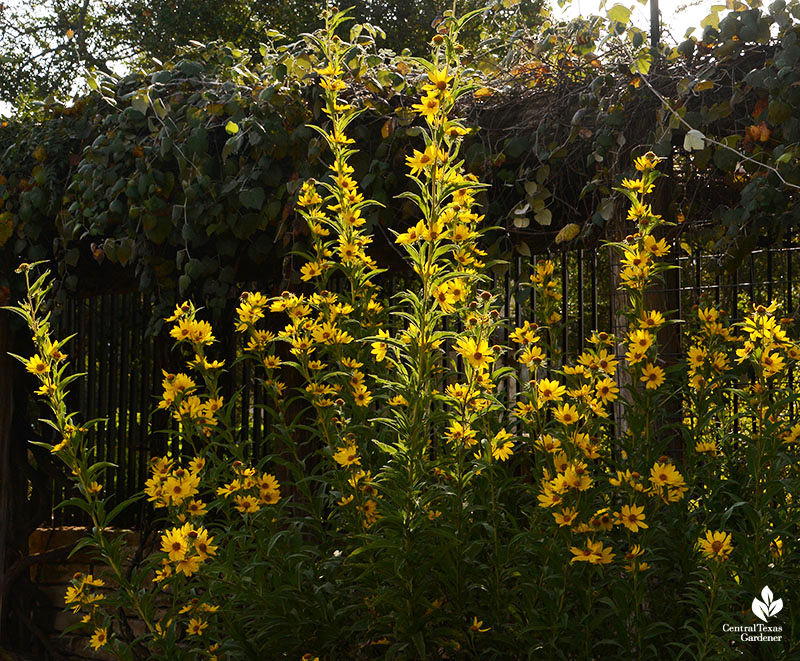
See how to pop native plant color and texture into containers with Leslie Uppinghouse from the Wildflower Center!
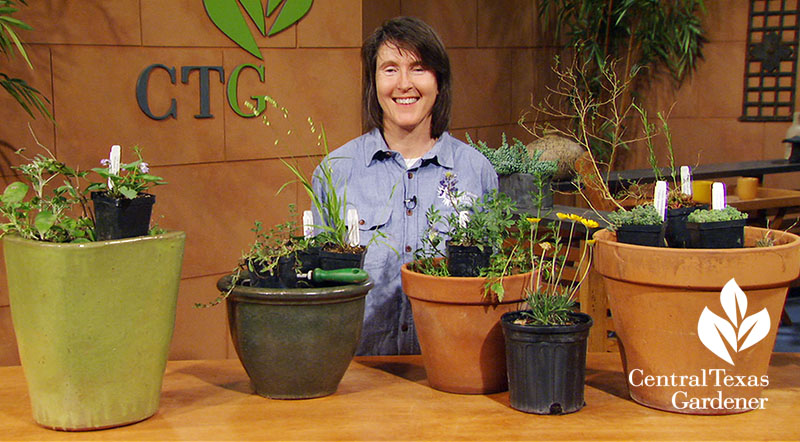
We often get asked, “What can I use for screening?” Andrea suggests native yaupon holly that can be cut and shaped for narrow spaces—within limits—to support fruit-eating birds.
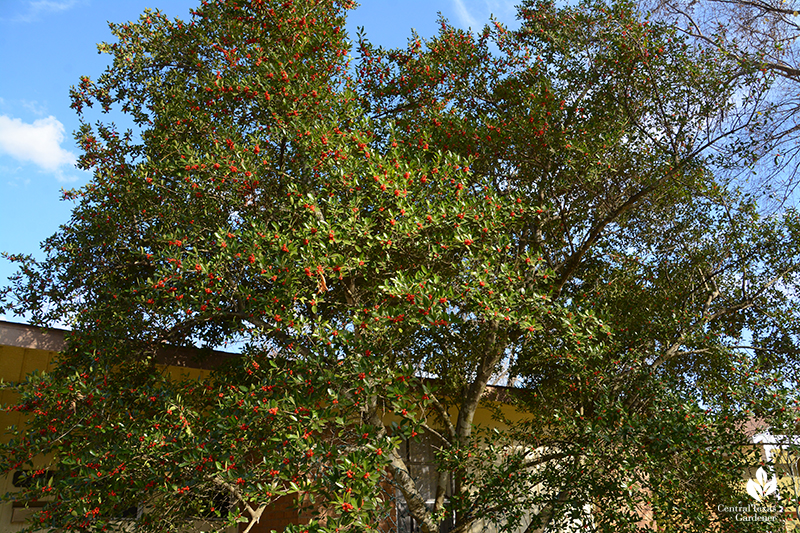
Usually by now, bees would be flocking to its tiny flowers.
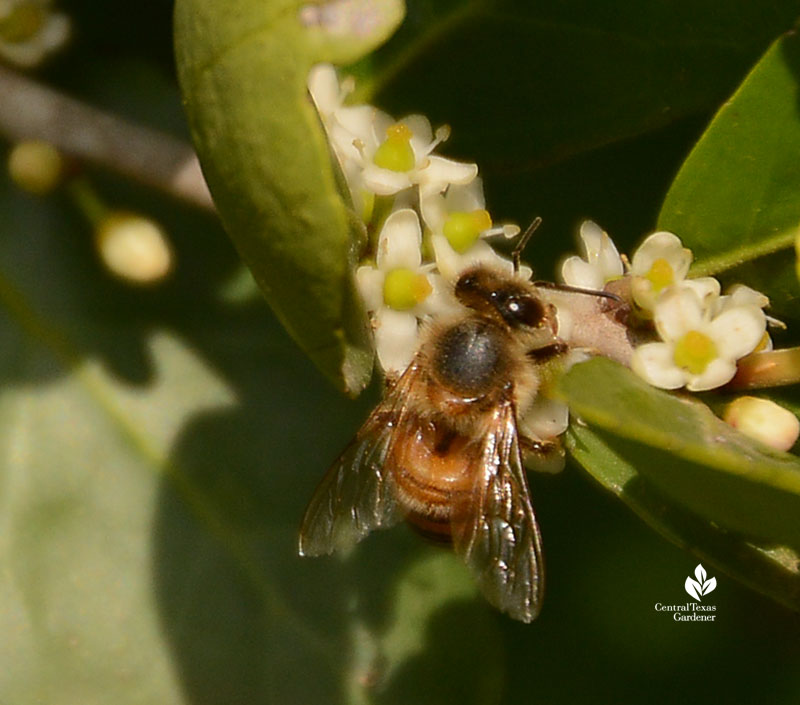
If you can build a support of some type, mostly evergreen crossvine can screen a narrow view or cover a pergola. It’s winding down its spring trumpets that feed hummingbirds and bees. Be aware that it will need a guiding hand to keep it from heading into your neighbor’s swing set!
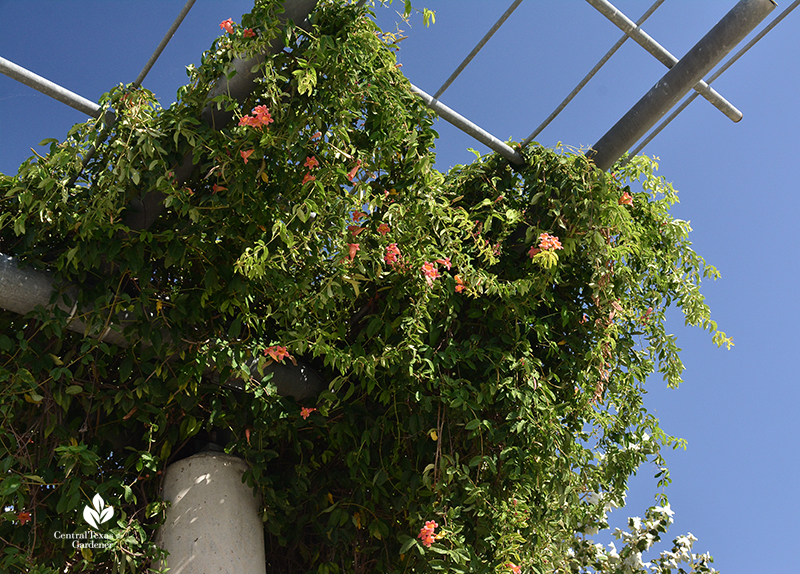
There are so many options and you can find some of them at the Lady Bird Johnson Wildflower Center Spring Plant Sale held Friday – Sunday through May 30.
Watch now for more great information!
Thanks for stopping by! See you next week, Linda
tags:

